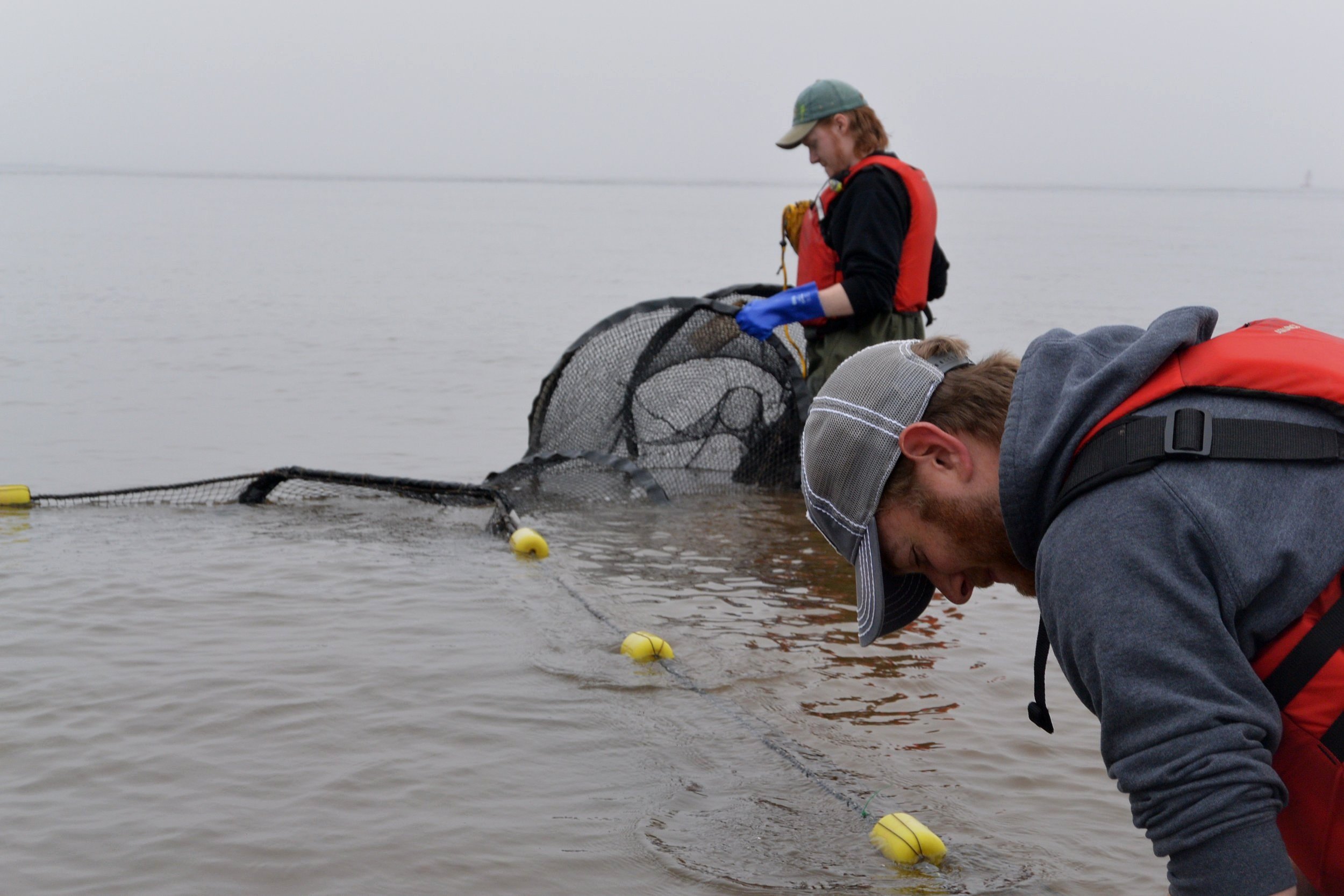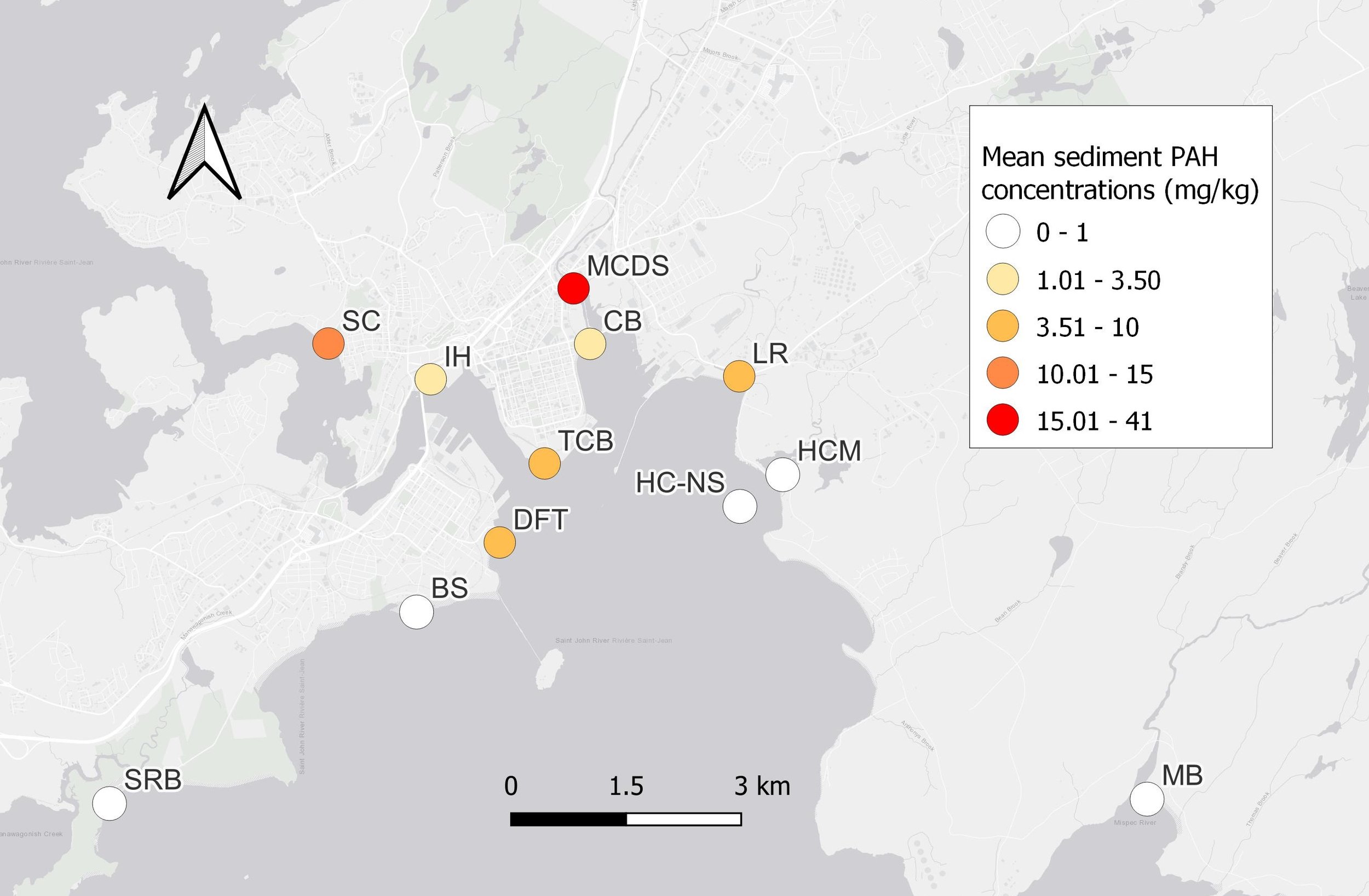
SAINT JOHN HARBOUR MONITORING
Saint John Harbour Environmental Monitoring
ACAP Saint John has historically sampled water quality across Saint John as well as fish communities in Marsh Creek and Courtenay Bay. In 2018 we expanded this work as part of the Coastal Environment Baseline Program, a Fisheries and Oceans Canada initiative focused on developing environmental baselines for some of the busiest ports in Canada (including Port Saint John). As part of this program, we monitored water quality at 22 sites within the Saint John Harbour and surrounding waterways. We also conducted sediment sampling (for contaminant analysis) at 13 sites and biotic community (fish and crustaceans) monitoring at 8 sites. This program ran from September 2018 to October 2021, and monitoring is continuing for the 2022 field season.
Water quality was measured bi-weekly or monthly between May and October. The parameters measured include temperature, dissolved oxygen, salinity, pH, turbidity, fecal coliforms, phosphates, and ammonia. There was generally good water quality at most Harbour sites, except for certain sites, especially those in Marsh Creek and Little River. Nutrients (phosphates and ammonia) were elevated at many sites, but the most frequent water quality issue was high levels of E. coli (a common fecal bacterium).
Sediment sampling was conducted at least three times per year, and samples were analyzed for polycyclic aromatic hydrocarbons (PAHs). PAHs are a group of contaminants that are released into the environment from the incomplete combustion of wood, coal, and fossils fuels. Sources of PAHs include car exhaust, industrial emissions, marine traffic, and residential emissions, and they are also used in products like pesticides, asphalt, and creosote. PAHs are toxic to aquatic life above certain levels. PAHs were highest in Marsh Creek (MCDS) and Spar Cove (SC); see the map below with the average PAH levels from 2018 to 2021.
Average sediment PAH concentrations between 2018 – 2021 at 12 of 13 collection sites (Black Beach not pictured; average concentrations were between 0 – 1 mg/kg).
Fishing was first conducted in October 2018 and subsequently was conducted monthly from May to October 2019 – 2021, with continued monitoring in 2022. We collect fish using both seine nets and fyke nets, which target fishes of different sizes to provide a more comprehensive snapshot of nearshore fish communities. Between 2018 and 2021, a total of 35,213 fish and invertebrates were caught, representing 34 species. The most common species caught were Atlantic silverside (Menidia menidia; 14,640 individuals, 41.6% of the total catch) and sand shrimp (Crangon septemspinosa; 14,224 individuals, 40.4% of the total catch). Some of the most common species we caught are shown below!
Common fish species caught in and around the Saint John Harbour.
(A) Atlantic tomcod (Microgadus tomcod);
(B) Atlantic silverside (Menidia menidia);
(C) White sucker (Catostomus commersonii);
(D) Winter flounder (Pseudopleuronectes americanus);
(E) Banded killifish (Fundulus diaphanus);
(F) Sand shrimp (Crangon septemspinosa);
(G) Stickleback (Gasterosteus sp.).
Spar Cove (SC) had the greatest total catch (11,599 individuals), with the majority of these individuals being Atlantic silverside, while Little River (LR) had the lowest total catch with 328 individuals. The greatest diversity of species was measured at Inner Harbour (IH), Tin Can Beach (TCB), Marsh Creek (MC2) and Little River. The other sites were dominated by Atlantic silverside or sand shrimp.
Map with pie charts showing relative abundances of caught species at eight fishing sites between 2018 - 2021. Pie chart size reflects the total number of individuals caught.
We caught individuals from over 30 species, check out some of our favourites below!
Additional fish species caught in the Saint John Harbour.
(A) Longhorn sculpin (Myoxocephalus octodecemspinosus);
(B) American eel (Anguilla rostrata);
(C) Butterfish (Peprilus sp.);
(D) Northern pipefish (Syngnathus fuscus);
(E) Rainbow smelt (Osmerus mordax).
Click here to read about the findings of previous research and monitoring conducted in the Saint John Harbour from 2011 - 2016 (UNB/Saint John Harbour Environmental Monitoring Partnership).




